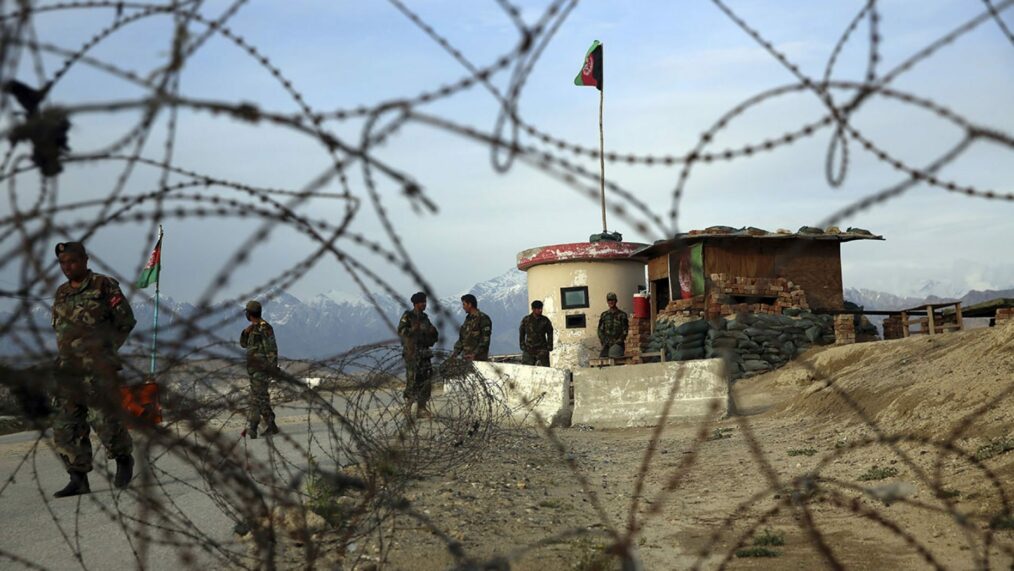Among the prevalent foreign actors involved in Afghanistan’s peace process, few have as a large of stake as Pakistan. The ascension of General Zia Ul-Haq, who served as Pakistan’s President from 1978-1988, was followed by an assertive foreign policy that sought to protect, and enlarge, Pakistan’s interests in Afghanistan. Long-standing issues, ranging from territorial disputes across the Durand Line, to Afghanistan’s historically friendly ties with India, had come to define what was, and remains, a testy relationship between Kabul and Islamabad.
Yet, in the backdrop of the Cold War, the opportunity for Pakistan to redefine its interests coincided with the arrival of Soviet troops in Afghanistan. Buttressed by political support from the United States, coupled with financial support from Saudi Arabia, Pakistan served as the primary conduit with the Mujahedin throughout its war with the Soviets.
Through the flow of aid and provisions of training and supplies, Pakistan’s relationship with the Mujahedin evolved beyond the original mission to oust the Afghan government and defeat the Soviets. Instead, Pakistan’s influence increasingly took on an ideological nature, with the political stylings of General Zia’s religious nationalism serving as inspiration for the Taliban and its fundamentalist movement.
The emergence of a Taliban government in Afghanistan represented a rare and significant victory for Pakistan’s sphere of influence, much of which had gradually eroded within South Asia throughout the Cold War. Among other objectives, a pro-Pakistani government in Afghanistan created opportunities to curb India’s influence and even use Afghan territory to provide training, logistical support, and safe haven to militants from Indian Kashmir.
While pressure from the international community may have forced Pakistan into a far more muted relationship with the Taliban, its strategic objectives and interests in Afghanistan has not undergone much change from its original position. For Pakistan, the intra-Afghan talks present an opportunity to shape the post-peace trajectory of Afghanistan. Within this stage of negotiation, Pakistan’s core aims are as follows: Political legitimacy for the Taliban, tempered Indian influence, US approval for a peace agreement, subsequently followed by a very gradual US troop withdrawal.
Having earned plaudits for its efforts to mediate and bring the Taliban to the negotiating table, Pakistan’s next moves will increasingly focus on integrating the Taliban into Afghanistan’s political fabric. Doing so, under a peace agreement, would legitimize the Taliban as a political entity and give Pakistan more flexibility in openly lending its support to pro-Pakistani elements across Afghanistan.
If the Taliban is to accede to a genuine DDR (disarmament, demobilization, and reintegration) process, it will likely demand the opportunity to participate politically as a formalized party in all levels of Afghan elections. An alternative route to sustaining the Taliban’s political influence may come in the form of a power-sharing arrangement, where the Taliban embeds itself more deeply into the Afghan state, through the presence of its members in the civil service and key ministries. In either case, such a scenario would be a boon for Pakistan, providing an avenue for which elements of the Taliban would be able to legitimately obtain power, and represent Pakistani interests.
In addition to transitioning the Taliban into a legitimate political entity, Pakistan’s foreign policy objectives remain heavily driven by its animosity with India. Since the Partition of India in 1947, Afghanistan has been a staunch ally of the Indian government, with the Taliban’s brief tenure serving as an anomaly. While it is unlikely to rid Afghanistan of pro-Indian influence, the integration of the Taliban would at the very minimum, modulate India’s influence. Thus, ensuring Afghanistan’s neutrality in any future Indo-Pakistani conflicts would represent a win for Pakistan.
Finally, the principal objective of any forthcoming peace agreement will necessitate the approval of the United States. The US approval would grant Pakistan peace of mind to pursue its interests in Afghanistan openly without fears of punitive sanctions by the US, or additional scrutiny from intergovernmental organizations like the Financial Action Task Force, which is charged with curbing terrorism funding and helps inform the policies of state actors. Having brokered the US-Taliban peace deal in February, Pakistan remains cognizant of America’s fatigue with the war in Afghanistan. Nevertheless, halting a hasty withdrawal by the Americans is critical to Pakistan’s own security concerns across the Durand Line. Fears of resurgent Pashtun nationalism seeping into Pakistan’s borders would pose an endemic threat in its restive northernmost provinces.
The past two years have featured some of the most momentous events in Afghanistan’s peacebuilding process. Having long been beholden to direct and indirect influence by foreign actors, Afghanistan will not only have to balance the interests of its internal parties, but also the interests of external players, like Pakistan’s military and security establishment. In the absence of a peace deal that meets its criteria, Pakistan may instead find itself in favor of the status quo, an outcome that would represent a devastating blow to the prospect of peace in Afghanistan.





